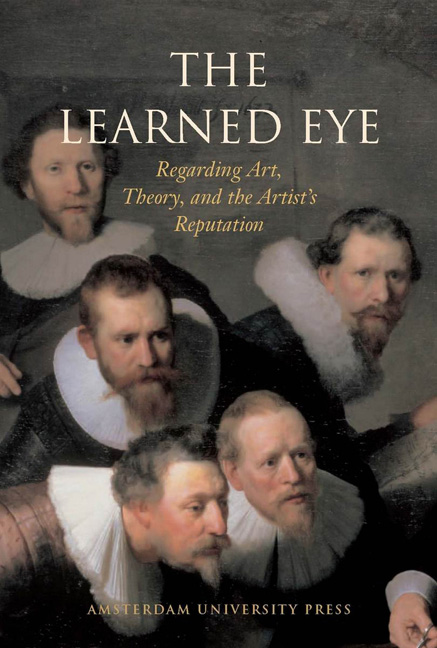Rembrandt and Rhetoric. The Concepts of Affectus, Enargeia and Ornatus in Samuel van Hoogstraten’s Judgement of His Master
Published online by Cambridge University Press: 25 January 2021
Summary
In this essay I will try to shed new light on the period appreciation of Rembrandt departing from rhetoric. The view that Dutch art theory was essentially in favour of a ‘classicist’ doctrine, and critical towards Rembrandt as a painter who putatively did not obey to the ‘rules of art’, can be substantially modified. From my analysis of Samuel van Hoogstraten's treatise, the Inleyding tot de Hooge Schoole der Schilderkonst, Rembrandt emerges as a ‘rhetorical’ painter. As is well known, Van Hoogstraten's treatise probably contains vivid reflections of the practises of speaking and thinking about art in Rembrandt's studio, where he was a pupil; these practices can be clarified from the context of seventeenth-century rhetoric.
The relation between rhetoric and painting has been studied extensively, although mainly in the context of Southern European art. Dutch art has escaped much of this analysis, which is remarkable because the Netherlands knew a rhetorical tradition which was widely and commonly popular, and developed into a very general and indispensable skill in all branches of professional life. When examining Rembrandt and Van Hoogstraten, one has to take into account that both painters probably had some rhetorical training, which was an essential part of the curriculum of the Latin school. Probably set off by the example of Rembrandt's studio and its ‘coterie’ of learned art lovers such as Huygens, Van Hoogstraten shortly after his teaching period became a prolific author of various literary works himself.
In his painting treatise, which was to a large extent didactic in scope, Van Hoogstraten deploys several rhetorical strategies, for example transferring the ideal education of the orator as outlined by Quintilian to the education of young painters. In doing so, he cites not only the classical texts which shaped early modern rhetoric such as the works of Cicero and Quintilian, but also modern authors, such as Gerardus Vossius who wrote several very commonly used schoolbooks on rhetoric and a small treatise on painting, and Julius Caesar Scaliger, whose Poetices libri septem were widely influential. He also drew eagerly from Franciscus Junius’ De Pictura Veterum, in which the classical theory of rhetoric had been adapted to painting, often simply by changing the word ‘orator’ to ‘painter’.
- Type
- Chapter
- Information
- The Learned EyeRegarding Art, Theory, and the Artist’s Reputation, pp. 111 - 130Publisher: Amsterdam University PressPrint publication year: 2005



